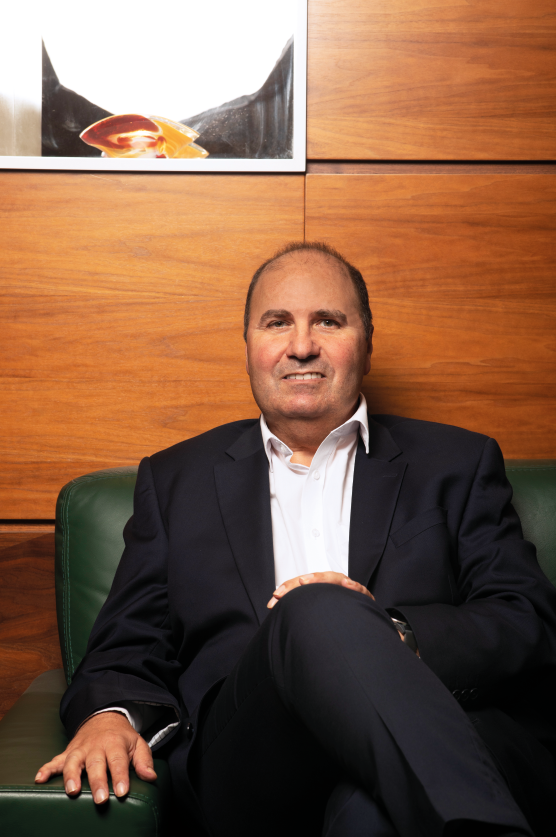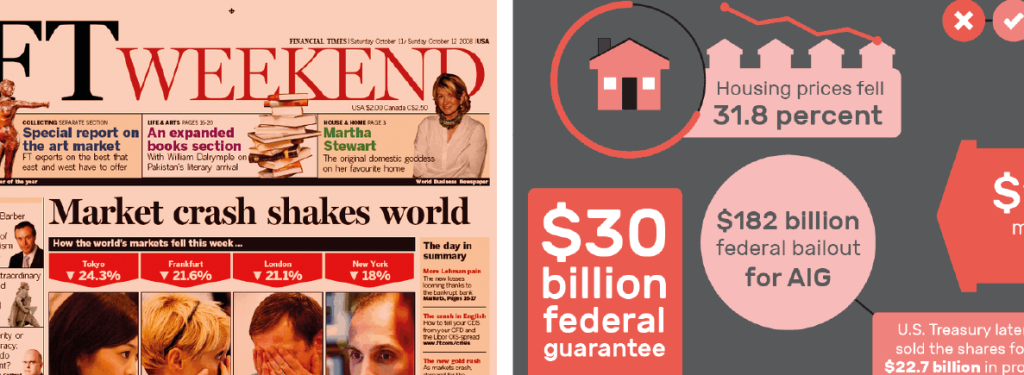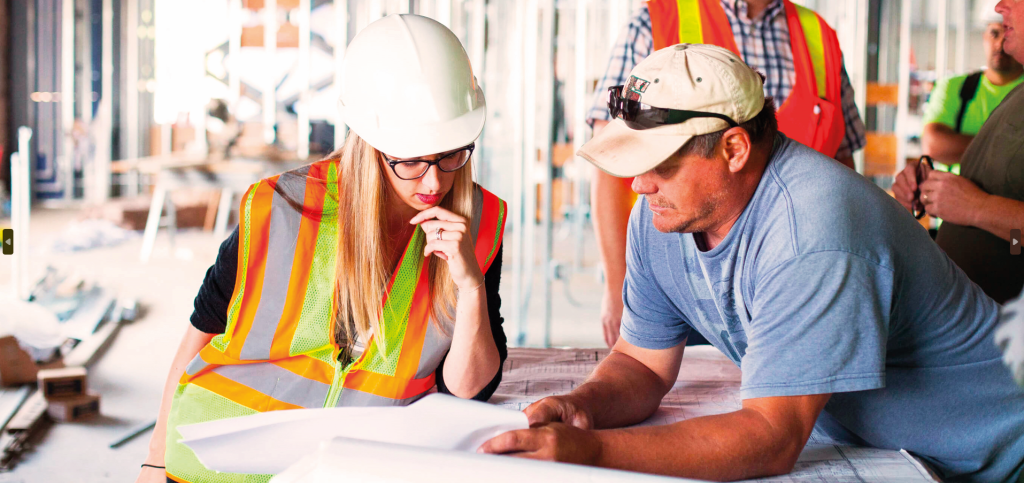Banking is crucial for any business as a healthy credit line is the lifeline which supports
all businesses to grow and develop.
Design & Build spoke to Albert Frendo, Bank of Valletta’s Chief Business Banking Officer about the development of banking in the context of the local property and real estate market.
He also delves into which type of development proposals the bank is looking into more closely and is increasingly prone to invest in.
F or centuries, the Maltese have been investing in property. With the island having a very small territory and sparse land, it was always obvious that the possession of property in Malta was always going to be a good and solid investment.
Due to the lack of other natural resources and less opportunities of investment products when compared to other, much larger economies, Malta’s property value was always on the rise, albeit with a few temporary exceptions.
Banks play an important part in the development of Malta’s economy and loans for property development and investments; to young couples who want to start a family and purchase their first new house, to large developers building blocks of flats, to modern office space and high-end prominent towers. Without bank credit, little or nothing could be achieved.
But is the property market always going to be as resilient as it has been historically? Is there a peak? Have we already reached it?
Although there is no black or white answer to such a frequently asked question, for Albert Frendo, Bank of Valletta’s most prominent business banker, the future is positive only if it is sustainable.
“I do not have a crystal ball, and it is very difficult to predict the future. However, as a fact, land in Malta is a very scarce resource and seeking where to build and how to build is becoming even more challenging. The fundamental question is whether the property business is based on real and sustained demand or simply on speculation. There is always a question mark there which is very difficult to answer unless with the benefit of hindsight and this is the crux of everything.”
We have opened-up to foreign labour and this is creating high demand, not only in the buying of property but more importantly in the rental sector
With 30 years of experience in his banking life, Mr Frendo acknowledges that Malta, banking, and the property market have changed considerably and rapidly in the past few years. “On the demand side, our society’s needs and expectations have changed, and this has fuelled the need of more housing and property units. It is a fact that our families have become smaller, and more and more people are living on their own, fuelling the need of more property units. There is also the external factor which has dramatically changed the scenario in the past years. We have opened-up to foreign labour and this is creating high demand, not only in the buying of property but more importantly in the rental sector.”
According to the preliminary results of the latest census, published recently, in the last ten years the Maltese population has registered a growth of 10,000 people a year, mostly through foreigners. The census shows that one in every five residents are non-Maltese and that the population grew by 115,000 in a decade.
While according to Mr Frendo, Covid-19 has had an impact, at least for the short term, there is now a sense of gradual return to “normality” and the market is correcting itself, once again.
“The pandemic was an unprecedented factor and those who were buying to rent suffered most of the brunt. For some time, the rental market was on the downhill as many expatriates either left the island or had a decrease in their income which reflected on their purchasing power. Some lessors had to either lower their asking rent prices or even leave their properties vacant for a while,” Mr Frendo acknowledged. “We also have witnessed a market shift from short to long-let when that was possible. However, we are now seeing a rebound and the indicators are that the rental market is gradually coming back to its pre-pandemic levels,” he continued. According to Mr Frendo all this means that demand is still high, and this is one important attribute to determine whether the property marker is experiencing a potential bubble or not.
“Whilst there are concerns on the growth of supply of property units in a relatively short period of time, at this point in time, such supply seems to be in general absorbed by the continuous upswing in demand and the property market does not appear to be under any marked immediate threat. If the current economic growth continues in sustained manner, demand is bound to continue rising and that gives certain comfort on the robustness of the property market,” Mr Frendo explained.
“Nevertheless, we always remain highly cautious. There are many variables at play and currently inflationary pressures and the potential impact of the increase in interest rates will play an important part in the shaping of the economy in the coming months and possibly years. More importantly if there is a possibility of a property bubble, one would only realise of such an eventuality when it actually happens with all the related ramifications, and banks are very careful not to fuel such possibility themselves.”
the indicators are that the rental market is gradually coming back to its pre-pandemic levels
Mr Frendo acknowledges that induced costs are on the rise influencing property business and the property market. These include more expensive raw materials, which one would expect will fuel further the price of properties. However, this is only one side of the equation and ultimately it all depends on the usual market forces of demand and supply.
“Affordability comes into play amidst the ongoing talk of inflation. It is obvious that customers’ affordability will be affected if the cost to acquire a property is on the rise.
Although the possibility of an increase in home loans pricing is still unlikely in the immediate term, one cannot ignore a possible scenario that the increase in international interest rates will eventually impact domestic rates which would result in interest rates for the end consumer to rise, making another dent on customers’ affordability. This would raise the cost of finance and would affect, once again, one’s purchasing power.”
But is investing in property still a good investment next to other possibilities?
Here, Mr Frendo’s training and experience comes in. “Although property in Malta has always given a good return, it is still not a sacred cow: after 2008, when the world was passing through an economic recession, prices in Malta also went down as a result of contraction in demand. Life is all about changing scenarios. Whilst it is true that property prices have shown an element of resilience throughout the years and such prices gathered strength post 2008 and have kept steadily escalating, it is also a fact that we are going through unprecedented changes in the economic, regulatory and social environment, making it very hard to predict how the future property prices will shape up. Ultimately as already highlighted one needs to have a deeper understanding of the drivers and dynamics of both demand and supply for one to start deriving conclusions on future expectations.
If the current economic growth continues in sustained manner, demand is bound to continue rising and that gives certain comfort on the robustness of the property market
“As bankers, we always profess on the need for a diversified portfolio or rather, not putting all the eggs in one basket. The more diversified one’s portfolio is, the less cyclical one’s position is expected to be in different economic cycles. Entering and exiting at the right time depending on one’s liquidity and financial position is also crucial and such decisions ought to be always based on sound economic fundamentals and the financial standing and sustainability of the entity in question.”
Banks’ lending activities are very much reflective of the economic activity as a country. Hence banks do take an active part in different degrees in the property market including homeloans and lending to the construction and property development sectors. Nevertheless, banks do seek to make sure that their exposures are managed and contained.
“Homeloans do play a very important activity of lending, to a number of banks. Given that the majority of borrowers are primarily first time buyers, the quality of the loan book is much more influenced by the economic activity of the country and the borrowers’ affordability rather than the price fluctuation of the property market per se.
“From a business perspective, Banks seek to contain their exposure as regards to the property development sector which is considered to be the one that would be immediately impacted in a scenario of over-supply in the property market. Banks in general seek to diversify their business lending portfolio to different economic sectors including manufacturing, hospitality, retail, health, and education amongst others.
The Bank adopts prudence and seeks to be selective in which properties to finance when it evaluates development projects. “Broadly speaking, I think that every commercial bank somehow or other provides finance for real estate, but every bank does it with a degree of caution. That degree changes from bank to bank according to its policies and risk appetite.”
As bankers, we always profess on the need for a diversified portfolio or rather, not putting all the eggs in one basket
This has led to developers relying less on commercial banks to raise finance than they used to do in the past. “One must admit that the demand for financing, especially the budding large sized projects, may well exceed the property or single name exposure limits that the Bank may have set. This has led developers to seek alternative sources of financing including the bond market, pre-financing through sale on plan and other different ways with different risk profiles of how one can raise the necessary money. The possibility of syndication was also prevalent in recent past when relatively very large projects were involved and such possibility could happen again going forward.”
According to Mr Frendo, the bank has become more selective in financing property development projects. The Banks look at all aspects of the project ranging from its location, the people behind the project, its proposed financing composition and leverage, cost and return analysis, margin of safety and market analysis.
the quality of the loan book is much more influenced by the economic activity of the country and the borrowers’ affordability rather than the price fluctuation of the property market per se
An increasing important aspect that is likely to become a highly determinant factor is whether the project is sustainable from an environmental perspective.
Added value by ensuring the minimal carbon footprint possible is gradually being considered as a key element in the selectivity criteria as to which projects the Bank will finance – with “green buildings” considered as the future of property development.
One needs to understand that being selective is a way for Banks to minimise the possibility that the property sector over-heats. “We are very conscious of the aftermath and resultant economic pain that ensued when property markets collapsed abroad. One can always argue that Malta is different, but the reality is that banks under the supervision of the regulators have a huge responsibility to ensure that no unwarranted risks are taken that could impact the country’s financial stability. Malta has its own economic realities but is also heavily influenced and impacted by the global economic realities, as the instability in Eastern Europe in highlighting. There is a necessary over emphasis by Banks in looking at the bigger picture and on the need to protect the market, the economy in general and the stakeholders especially depositors – which makes banks’ propensity to lend instinctively cautious.” The bank must therefore be highly selective in which risks it is able and willing to take. “Obviously, this choice is very subjective, and it is our credit committees which make the final selection. Our final decision does not necessarily mean that a project is right or wrong, but it means that it fits or does not fit one’s risk appetite and expectations.”
According to Mr Frendo, developers who present projects to the bank are being treated as important stakeholders. It is in the bank’s own interest that a project is discussed at length with the developers and their technical team and a banking solution is developed that may entail changes or phasing to ensure that the project’s risks are well managed and contained. Developers who present their projects with an open mind and are ready to take on board the changes to make the transaction more bankable and more risk contained are more likely to have a positive outcome although as highlighted every case is treated on its own merits.
While the primary beneficiary of a successful outcome is obviously the entrepreneur, the bank also has an interest to be part of that success, in the interests of its wider stakeholders
“What we are striving to do is create value, not just provide finance. We must ensure that a project makes sense and that our success is ultimately that these ventures are successful and sustainable. While the primary beneficiary of a successful outcome is obviously the entrepreneur, the bank also has an interest to be part of that success, in the interests of its wider stakeholders with now also a growing interest in deriving environmental sustainability.”
Mr Frendo argues that meeting the wider demand for credit can become a challenge when the economy starts growing at higher rate than the banks themselves. The banks’ balance sheets may not able to fully sustain the extent of the demand especially in relation to large tickets. Banks need to ensure that the risk being underwritten is within their risk appetite framework and solvency requirements and meet regulators’ and other stakeholders expectations.
Asked on whether the bank is also interested in financing large projects, such as high-rise towers, Mr Frendo said that there is no a hard answer to this.
“If we agree that the land is scarce, one can also agree that a better utilisation of the same land makes economic sense. One should also look at the wider economic factors already highlighted including how this project could potentially be impacted by the sector’s supply and demand dynamics and how the project itself is influencing such dynamics, and the overall viability of the project including environmental sustainability.”
“There are several challenges and opportunities coming our way, and it is difficult to say whether high-rise is our logical future or otherwise. I hate mantras. I think the future will prove to be shaped by a mix of economic, social, financial and political considerations driven by the demands of different interested parties and wider economic and environmental realities which will likely result into a mix of outcomes. What should drive banks is not the size of the project itself but rather the measure of economic value and sustainability and whether the risks being undertaking are within their parameters and appetite.”
Developers who present their projects with an open mind and are ready to take on board the changes to make the transaction more bankable and more risk contained are more likely to have a positive outcome
Mr Frendo says that he can see banks in general being involved in the financing of high rise buildings, but given the size of borrowing requested, it is likely that we will witness more syndicate lending in the future and not necessarily with an entire composition of locally operating banks.
As to the future relationship between BOV and the property industry, Mr Frendo is positive and has some guidance on the matter: “The more thorough and professional a proposal is, the better it is for a bank to properly assess in timely fashion. Some projects do succeed while others fail and there is extensive research and literature on the attributes of successful projects or otherwise. Projects might go wrong for a number of reasons – typically, a high level of gearing and weak financial management may be key drivers to such a reality – especially in economic downturns, or when decisions are taken instinctively or just intuitively rather than through professional analysis to ensure a proper feasibility assessment.” Needless to say, the people behind the project are key in all this and their vision, commitment and having the proper governance and controls all make a marked difference on the expected outcome. Banks need full visibility and transparency to assess all these different aspects and ultimately it is in the interest of the investors themselves that Banks carry out a thorough, professional and intrusive assessment.
The level of information is expected to change radically in the coming months and years as Banks are actively considering the Environment, Social and Governance (ESG) framework and impact as a critical element in assessing which projects to finance or reject and the right information would be a key requirement to arrive at such assessment.
“If one invests funds in the securities market, the first thing one does is gauge the probability of retrieving the capital outlay, and the promised return. Positive decisions are taken once one is convinced that the fundamentals are strong and the business is sustainable. This is the same process that banks take when they provide loans. It’s very simple with us – it all depends on the basic principles of good lending underpinned by our assessment of the business fundamentals and the wider impact on society at large.”
ultimately it is in the interest of the investors themselves that Banks carry out a thorough, professional and intrusive assessment
BOV has financed a number of projects in the past and will surely continue to seek to finance sustainable projects that are underpinned by sound business fundamentals and sensitive to environmental sustainability. Indeed, sustainable lending is the new normal that defines how banks are operating and will operate in the future. Beyond analysing the short and medium term project returns that ensure the settlement of the debt, Banks are becoming more interested in the lasting effects of the project in terms of sustainability. If the project ticks the right boxes, then the possibility of raising finance is much higher, fulfilling the requirements and aspirations of a number of different stakeholders beyond the immediate financial returns.









Comment